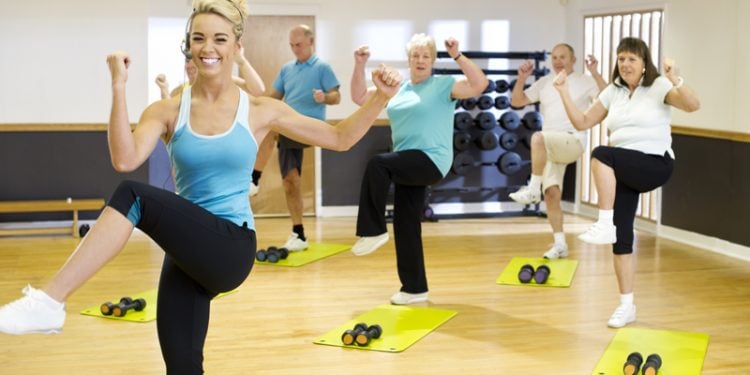As a former group exercise manager, I’ve had the opportunity to evaluate countless fitness instructors teaching classes. One thing that always stood out was the association between an instructor’s use of verbal communication and the palpable energy in class (the stronger the communication, the more energy).
What I noticed is that even the best exercises and most upbeat music can’t completely make up for poor voice projection or yelling into the mic. And participants might miss important technique cues when the instructor mumbles or speaks too softly.
Clear cuing and audible instruction demonstrates that you're a confident leader who can help participants exercise safely and to the best of their abilities. Here’s how to ensure good voice projection in a fitness class—without damaging your vocal cords in the process.
Talk it through
Getting good at voice projection sometimes takes practice. Just as you might practice exercises or choreography in your living room at home, rehearse how you plan to communicate those exercises, talking through every cue and technique tip in advance. The more familiar you get with what you’ll say in class, the more you can focus on how you’ll say it.
Know your yelling threshold (and stay below it)
If possible, plan a few practice sessions in the actual studio where you teach when it’s not in use. Play music and use the mic. Imagine projecting your voice to people in the back row.
Experiment with speaking softly and also amplifying your voice to create an audible impact—without yelling. Once you resort to yelling, you’re in danger of losing your leadership power. I would argue that most participants feel less, not more, motivated when they’re being yelled at. Use your voice to display assertiveness, not aggression.
Protect your voice health
Yelling when you teach can strain your vocal cords (another reason not to do it). You can further protect your voice health in the following ways:
- Warm up your voice before teaching (search “Vocal warm-up” on YouTube for examples of how to do this).
- Project your voice with deep, controlled breathing.
- Use a mic when one is available.
- Drink plenty of water during class.
- Incorporate body language and visual cues to help communicate what you want participants to do.
Don’t forget to pay attention to signs that your voice might need a break. Teaching a high volume of classes in a short timeframe or teaching when you have a cold could put you at greater risk of vocal strain, hoarseness or losing your voice altogether, all of which indicate that you need to rest your voice.
Make it their workout, not yours
Deep, steady breathing aids in good voice projection better than short, shallow breathing. Knowing this, you might sometimes have to make a choice: Do you go all-out on a set of hard interval drills and become breathless as a result? Or do you hold back on fully challenging yourself so you have the breath power to properly motivate and coach participants? While participants want to see instructors working hard alongside them, they also want to be motivated and pushed to perform at their best. That’s where strong verbal coaching comes in.
Vary voice inflection
Teaching fitness classes is a form of public speaking, and a compelling public speaker varies pitch and tone. As a fitness instructor, you might speak loudly and quickly during some parts of class, then softly and slowly during other parts.
The way you speak when cuing a complex exercise will likely be different from how you speak at the climax of an exciting cardio interval. Your inflection will be different yet again during the final stretch at the end of class. Consider filming yourself teaching to get a sense of how effectively you use vocal inflection in class.
Don’t underestimate the power of your communication skills as a fitness instructor. Variety in vocal inflection, tone and volume helps keep your classes fresh and participants attentive.
















